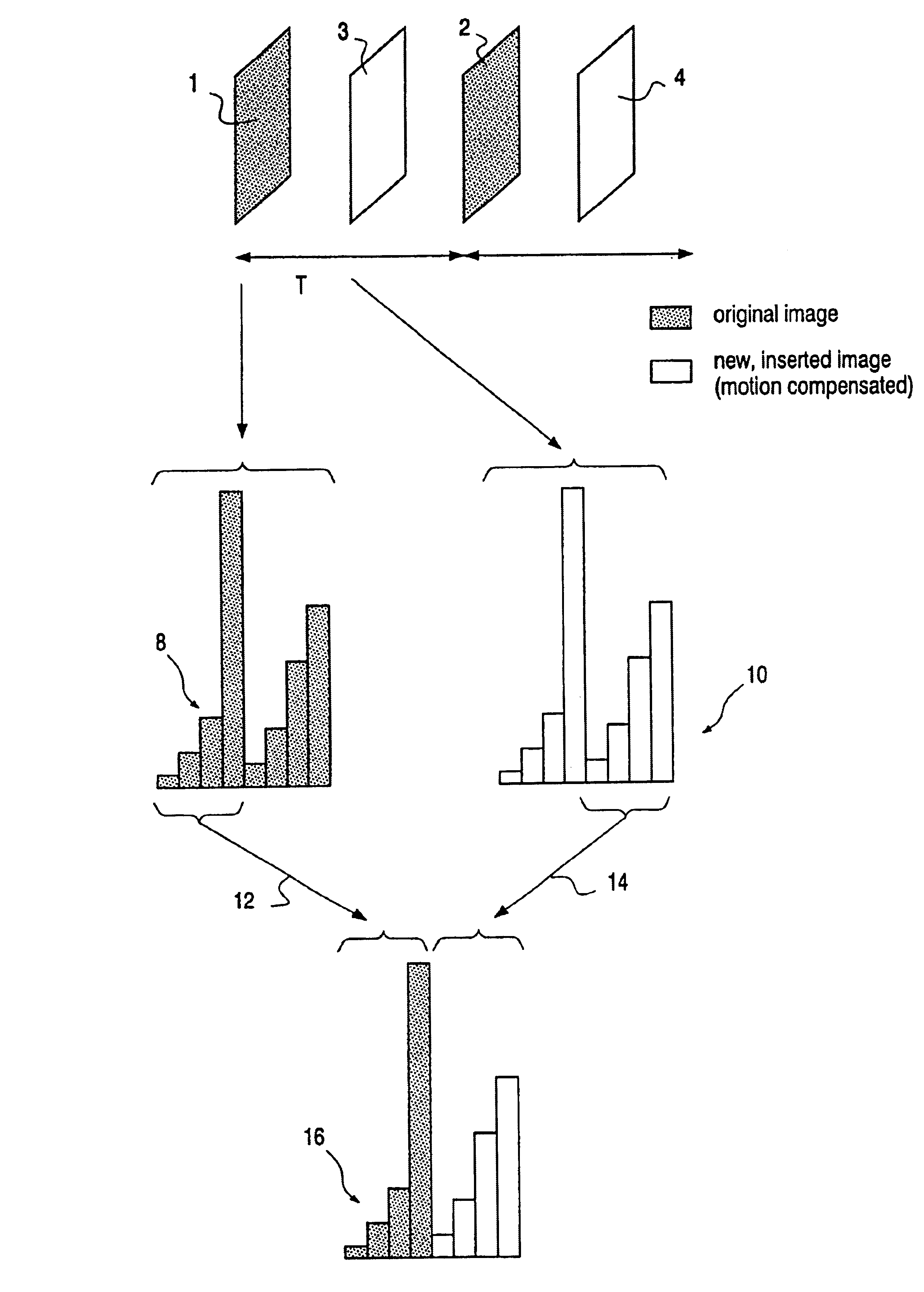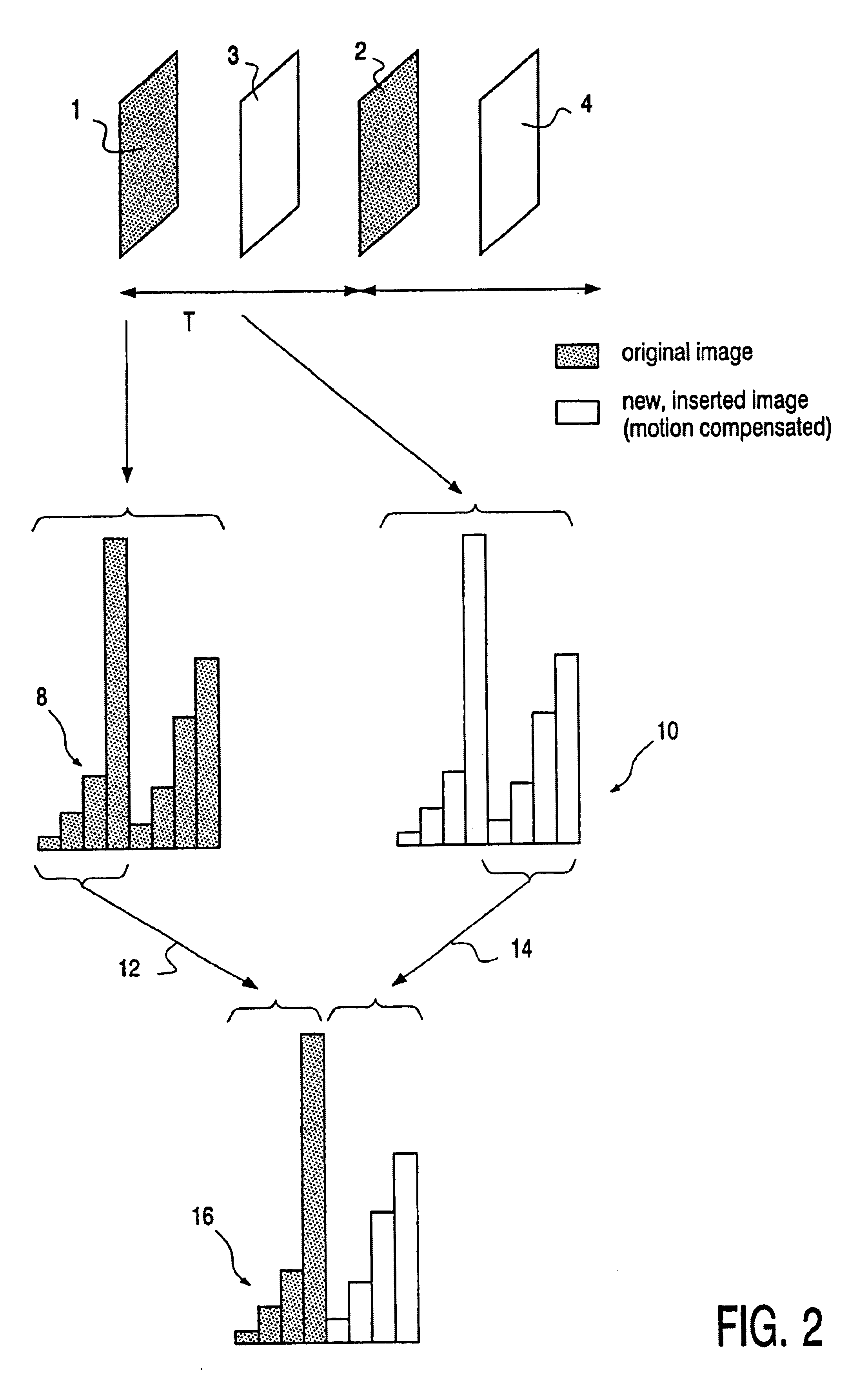Motion compensated upconversion for plasma displays
a plasma display and upconversion technology, applied in the direction of instruments, television systems, signal generators with optical-mechanical scanning, etc., can solve the problems of large area flicker, many motion artifacts, and many motion artifacts, so as to reduce large area flicker and reduce motion artifacts
- Summary
- Abstract
- Description
- Claims
- Application Information
AI Technical Summary
Benefits of technology
Problems solved by technology
Method used
Image
Examples
first embodiment
[0048]FIG. 3 is a block diagram of an apparatus of the present invention. The apparatus, e.g., a television receiver, comprises a set and a panel. Both set and panel contain processing modules. The panel (i.e., the actual screen) receives Red Green Blue (RGB) signals from a tuner in the set.
[0049]Interlaced YUV input data 20 is de-interlaced and up-converted by means of a frame rate converter 22. Several commercial available modules exist, see “Video Processing for multimedia systems”, by G. de Haan, University Press Eindhoven, ISBN 90-9014015-8.
[0050]The output is a progressive 100 Hz video stream 24. This video stream 24 is in standard YUV format. It is converted, by YUV converter 26, to a 100 Hz RGB signal 28. This 100 Hz RGB signal is transferred from the set to the panel, which is indicated by a dashed line. The next step is a gamma / Floyd Steinberg (FS) dithering performed by a video processor 30. The output of the video processor 30 is a processed 100 Hz progressive RGB signal...
second embodiment
[0052]In FIG. 4, a block diagram of the apparatus of the present invention is shown. Interlaced YUV input data 50 is de-interlaced by a frame rate converter 52. In frame rate converter 52, motion vectors 53 are calculated out of two consecutive original images using a state-of-the-art motion estimation process. Unlike in FIG. 3, no up-conversion is performed in this module. The outgoing signal is a progressive 50 Hz video stream 54. This video stream 54 is in YUV format. It is converted, by YUV converter 56, to a 50 Hz RGB signal 58. This 50 Hz RGB signal 58 is transferred from the set to the panel, which is indicated by a dashed line. The next step is a gamma / FS dithering performed by a video processor 60. The output of the video processor 60 is a processed 50 Hz progressive RGB signal 62. Next, sub-field generation is performed by a up-conversion / sub-field generation module 64. At this point, an up-conversion is performed by inserting new images between original images using the m...
PUM
 Login to View More
Login to View More Abstract
Description
Claims
Application Information
 Login to View More
Login to View More - R&D
- Intellectual Property
- Life Sciences
- Materials
- Tech Scout
- Unparalleled Data Quality
- Higher Quality Content
- 60% Fewer Hallucinations
Browse by: Latest US Patents, China's latest patents, Technical Efficacy Thesaurus, Application Domain, Technology Topic, Popular Technical Reports.
© 2025 PatSnap. All rights reserved.Legal|Privacy policy|Modern Slavery Act Transparency Statement|Sitemap|About US| Contact US: help@patsnap.com



